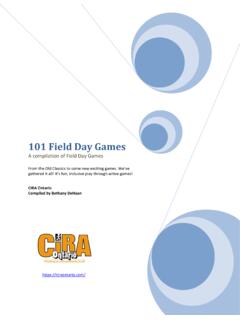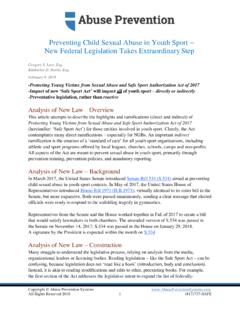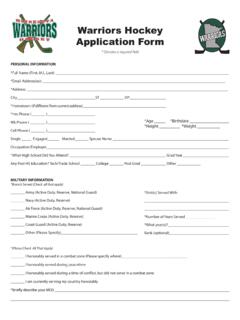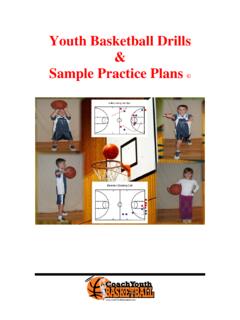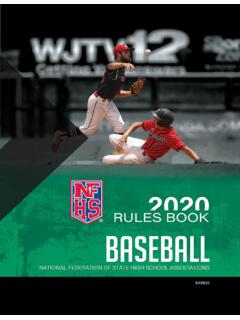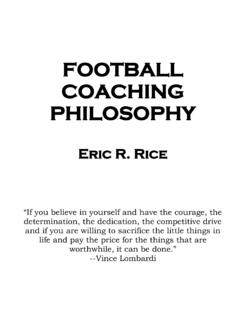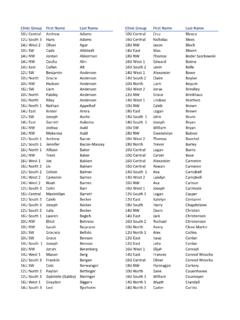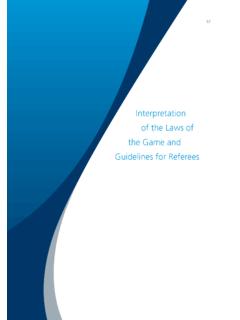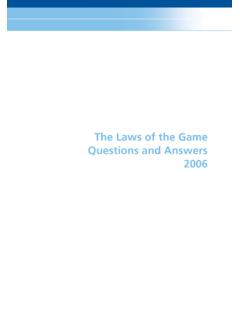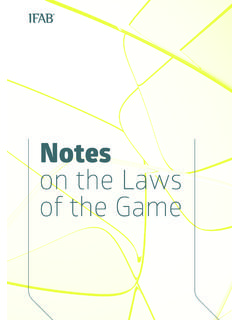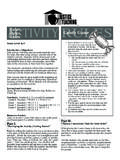Transcription of Laws of the Game - cdn1.sportngin.com
1 laws of the Game The 2016-2017 laws of the Game are organized as follows: Law 1 The Field of Play Law 2 The Ball Law 3 The Players Law 4 The Players' Equipment Law 5 The Referee Law 6 The Other Match Officials Law 7 The Duration of the Match Law 8 The Start and Restart of Play Law 9 The Ball In and Out of Play Law 10 Determining the Outcome of a Match Law 11 Offside Law 12 Fouls and Misconduct Law 13 Free Kicks Law 14 The Penalty Kick Law 15 The Throw-in Law 16 The Goal Kick Law 17 The Corner Kick Each season FIFA publishes an extensive laws of the Game guide which describes the laws of soccer.
2 Here is an overview of the 17 laws of the game. Click on the subject headings to read about the laws in greater detail. Law 1: The Field of Play There are very few fixed dimensions for soccer fields, even at the highest level. FIFA only stipulates that for professional 11-versus-11 competition, the length must be between 100 yards and 130 yards and the width between 50 and 100 yards. Law 2: The Soccer Ball The circumference of a soccer ball must not be more than 28 inches (70 centimeters) and not less than 27 ins (68 cm). The size 5 ball, used by ages 12 and above, is spherical and made of leather or some other suitable material.
3 It must not weigh more than 16 ounces (450 grams) and not less than 14 oz (410 g) at the start of a match. The ball must be of a pressure equal to atmosphere (600 1,000 g/cm2) at sea level ( Ibs/sq in Ibs/sq in). Law 3: The Number of Players A match is played by two teams, with each allowed no more than 11 players on the field at any one time, one of whom is a goalkeeper. A match may not start if either team has fewer than seven players. Law 4: The Players' Equipment The FIFA laws of the Game state that players are not allowed to use equipment or wear anything that is dangerous to himself or any other player (including any kind of jewellery).
4 A player s basic equipment consists of a jersey or shirt with sleeves, shorts, stockings, shin pads and footwear. The two teams must wear colors that distinguish themselves from the opponent, referee and assistant referees. Law 5: The Referee The referee has the full authority to enforce the laws of the game and his decision is final. He controls the match in cooperation with the assistant referees, and where applicable, the fourth official. The referee ensures that the ball and players' equipment meets the requirements, acts as timekeeper and stops play for infringement of the laws among several other duties. Law 6: The Assistant Referee In professional soccer there are two assistant referees whose job it is to call offsides and throw-ins, and help the referee make decisions.
5 Carrying a flag to signal their observations, assistant referees, or linesmen as they are commonly known, must monitor the sidelines and goal lines and flag if the ball goes out of play, signaling which team the goal kick or throw-in should be awarded to. Law 7: The Duration of the Match Matches consist of two 45-minute halves, unless the two teams and referee agree otherwise before the start of play. The half-time interval must not exceed 15 minutes, and can only be altered upon consent of the referee. A referee may play added time because of substitutions, assessment of injuries, removal of injured players from the field of play, time wasting and any other cause.
6 An abandoned match is replayed unless the competition rules state otherwise. Law 8: The Start and Restart of Play Kick-off is the way of starting or restarting play: - To begin a match - If a goal has been scored - To begin the second half - To begin a period of extra-time. Law 9: The Ball in and out of Play The ball is out of play when: - It has wholly crossed the goal line or touchline - Play has been stopped by the referee. The ball is in play at all other times, including when: -It rebounds off a goalpost, crossbar or corner flag and stays on the field. -When it hits a referee or assistant referee when they are on the field.
7 Law 10: The Method of Scoring Goal Scored: A goal is scored when the whole of the ball crosses the whole of the goal line between the posts and crossbar, provided there is no infringement such as offside, a foul or handball. The team that scores the most goals wins the match. If the number of goals scored between the two sides is equal at the end of a match, it is a draw. When competition rules require that there must be a winner, the outcome will be decided by either: - Away goals rule - Extra-time - Penalty kicks. Law 11: The Offside The law states that if a player is in an offside position when the ball is played to him or touched by a teammate, he may not become actively involved in the play.
8 A player is in an offside position if he is closer to the goal line than both the ball and the second-to-last defender, but only if he is in the opposition half of the field. Law 12: Fouls and Misconduct Click the heading for a summary of the different infractions that will lead the referee to blow the whistle, stop play, and possibly take disciplinary action. Law 13: Free Kicks Free kicks are either direct or indirect, and the ball must be stationary when the kick is taken. The kicker must not touch the ball again until it has touched another player. Law 14: The Penalty Kick Feinting in the run up to taking a penalty kick to confuse the goalkeeper is permitted.
9 However, feinting to kick the ball once the player has completed his run up is considered an act of unsporting behavior for which the player must be cautioned by the referee. Preparing for the penalty kick The referee must confirm the following before the kick is taken: - the kicker is identified - the ball is placed properly on the penalty mark - the goalkeeper is on the goal line between the posts and facing the kicker All other players on the field are: - Outside the penalty area - Outside the penalty arc - Behind the ball. laws 15, 16 & 17: Throw Ins, Goal Kicks, and Corner Kicks When the ball goes out of play over the touchline, a throw in will be taken by a player from the team who did not touch the ball last.
10 When the whole of the ball goes over the goal line, a goal kick or corner is awarded, depending on which team touched the ball last. If the defending team touched it, a corner is awarded to the opposition. If the attacking team had the last touch, a goal kick is awarded. LAW # 18 IS THE UNWRITTEN LAW. LAW # 18 IS THE DISCRETION OF THE REFEREE.
